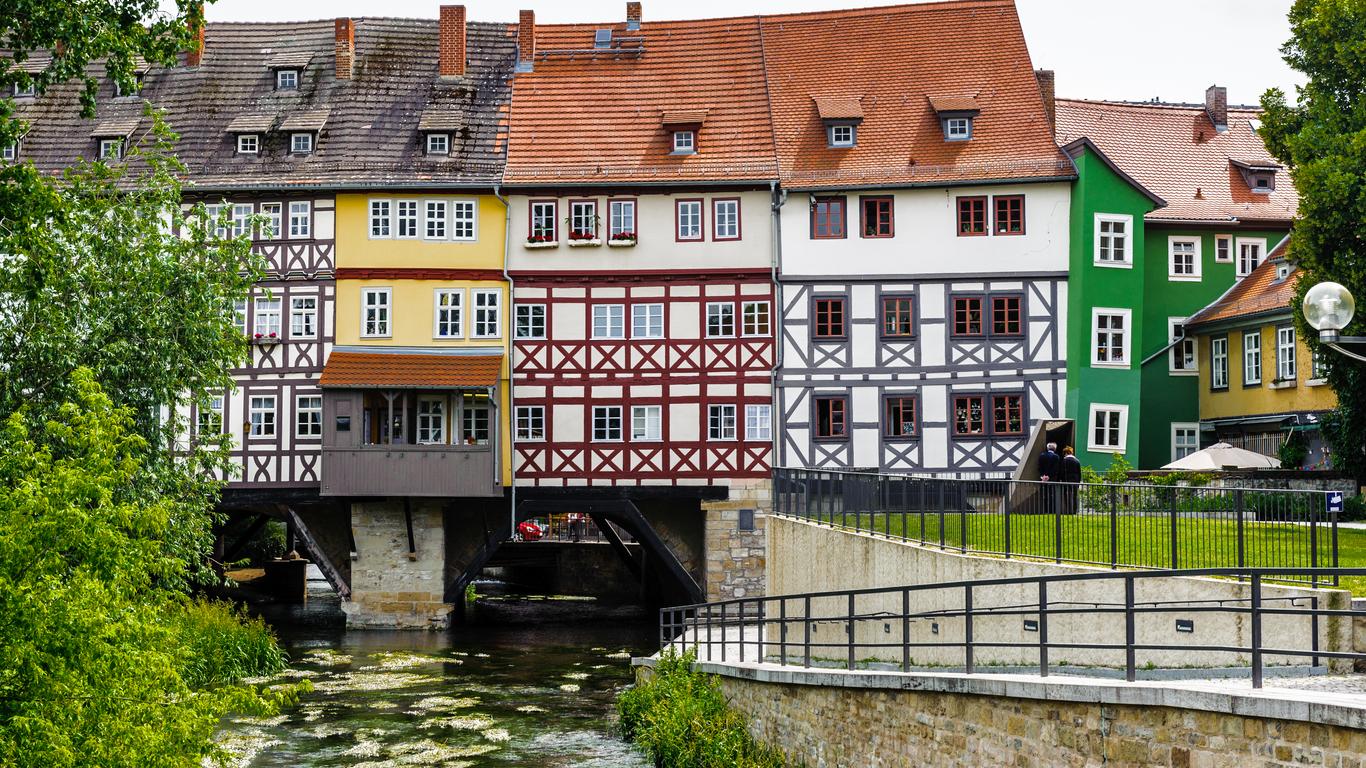The capital city of Thuringia and a thriving German university town, Erfurt punctuates the skyline with ancient church towers and impressive Baroque architecture while resting easily on the shores of the meandering little Gera River. The University of Erfurt, founded in 1379, weaves its web across the city, influencing culture and livening up the downtown area. Its famous student, priest and monk, Martin Luther, made his mark on the world-at-large, forever cementing Erfurt’s place in history.
Erfurt Cathedral where Martin Luther was ordained is the first stop for many tourists who admire the stained-glass windows, delicately carved choir stalls and the famous 850-year-old “Wolfram” bronze candelabrum. A string of craft and souvenir shops line the Kramerbrucke, and serious shoppers head to the street Anger and city centre for high-end fashion before taking a rest in the gardens at Egapark. Fischmarkt is where to find dozens of street food stalls, many selling the famous Thuringer Bratwurst, native to Erfurt.
High-speed trains and two federal motorways, Bundesstraße 4 and Bundesstraße 7, run through Erfurt, providing direct access from major cities in Germany. Tourists can navigate the compact city centre on foot or by using regular tram service throughout the metropolitan areas. Night buses provide transportation for those enjoying evening concerts, plays and pubs.
Though Erfurt survived World War II to become one of the most intact medieval communities in Germany, it’s history digs much deeper. The missionary St. Boniface established Erfurt as a bishopric in 742, cementing the religious roots that lead to the local Augustinian monastery where Martin Luther lived as a monk in 1505. Development of a blue pigment extracted from a unique woad plant largely spurred the city’s economic growth.





